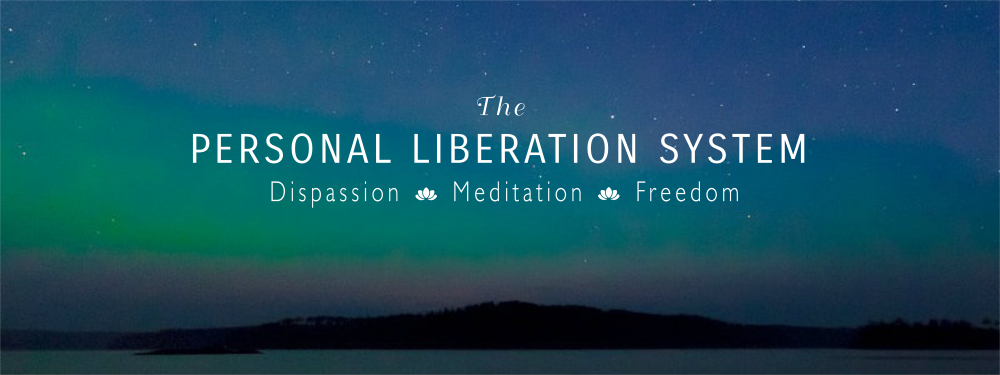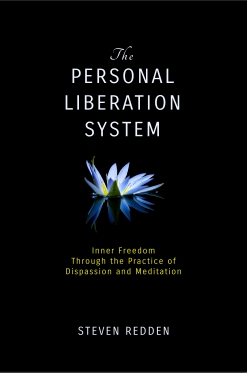Rear Cover
In every situation, we have a choice: we can either (1) have the situation or (2) have the situation, plus add a problem to it by being thrown into agitation about it. If we choose (2), we now have two “problems,” the second of which is entirely created by us. (p. 33)
The moment we start regarding expectations as “things we can depend on happening—and they had better happen or we will be really upset,” we have bought ourselves a ticket to dispassion disaster. For every such expectation is a land mine that we lay in our own psyche, and eventually some person (or situation) will “step on” one, and it will blow up—inside us. (p. 57)
Like a barnacle attached to a ship, feeling serious usually accompanies thinking seriously and acting seriously. Yet we can address even the most serious matters better when we do not inflict on ourselves the added burden of feeling serious about them. (p. 67)
Most of us probably associate failing to mind our own business with the burdensome effects it produces on the “interferee.” But it is also a major source of agitation and bondage for the “interferer,” and learning to leave people free is profoundly liberating. It is an expression of “soul courtesy,” which scrupulously avoids actions that infringe others’ free will or unfairly make their lives harder. (p. 89)
Every one of us lives in a private, one-seat theater in which we experience a continuous series of interior movies created by us and known only to us. (p. 164) ^
Table of Contents
Introduction
Part I: The Practice of Dispassion
1—The Basis of Dispassion
2—The Necessity for Dispassion
3—The Science of Dispassion
4—Seeking & Accepting Facts
5—Expecting Nothing
6—Rejecting Unnecessary Seriousness
7—Learning Through Experimentation
8—Minding Our Own Business
9—Curbing Needless Speculation
10—Forgetting the Past
11—Controlling Speech
Part II: Meditation
12—The Basis of Meditation
13—The Necessity for Meditation
14—Beginning Meditation
15—Mind as a Movie Theater
16—Mind as a Concept Creator
Afterword
Bibliography ^
Introduction
Many years ago I found myself desperate to solve my principal life-problem. From my earliest youth my interior life-experience was one of a pronounced duality. In the background of my consciousness I was aware of an ever-present, unchanging Self or “I” that was independent of my thoughts, feelings, or body. Periodically this wondrous energy that was the real Me would come forward and inhabit my outward persona, so that I was It. Temporarily united with this Self, I felt exhilarated, invincible, fearless, ageless, insightful, compassionate, and, above all, free—free to be myself, free from the world and its demands, free from the flaws and faults in my lower nature.
The foreground of my awareness consisted of my ordinary human self. As this self, I was afflicted with a painful and distressing predisposition constantly to be thrown into agitation by events, circumstances, and interactions with people. These agitated reactions took every form imaginable: fear, impatience, futility, self-pity, criticism, anger, frustration, irritation, self-doubt, possessiveness, discouragement, humorlessness, and on and on. This problem cast a dispiriting shadow over every aspect of my personal life. Under its oppressive influence, I felt hopelessly in bondage—robbed of self-confidence, censored in self-expression, constrained in my relations with others, blocked from being myself.
Not surprisingly, the balance of this duality was decidedly lopsided: the moments of full communion with my real “I” were relatively infrequent and brief, while the tormenting reactions to life were continuous and relentless. Eventually I could no longer stand the misery inflicted by this situation, and I resolved to find a way to free myself from it. What I wanted was simple: to open a pathway to my real and higher “I,” so that I could contact it at will and make my experience of it continuous and permanent; and to put an end to all the agitated reactions to people, events, and circumstances that plagued my life and eclipsed the real Me. But how to do it?
After researching various teachings and listening to my intuition and common sense, I was convinced that my two problems were so interrelated that whatever methods I found to address each one separately must work together as a system. Only in this way would they ever generate enough power to accomplish my two goals. As for the “pathway to the Self” problem, it seemed clear that I would solve it through meditation; it was merely a matter of experimenting to find the right kind. The “constant agitated reactions” problem was more of a mystery. In my reading I had run across the word dispassion, which had struck a powerful chord in me. I could feel the wonderful and familiar higher calm it represented, and my intuition whispered that here was the solution to the agitation I suffered. Intrigued, I searched through numerous books to discover the science behind it and the step-by-step methods of practicing it. But all I found were sentences like “Through dispassion the Self can dissociate itself from the not-self; this is liberation” and “Dispassion is the Way; through it is one freed.” I realized that if I wanted to practice dispassion, I would have to work out the science and create the techniques for it myself.
During my researches I had identified a number of disciplines (also lacking specifics) that I sensed ought to form part of a dispassion practice. So I gathered up all the practical hints about these that I could find and began my quest. After a years-long process of thought, analysis, and experimentation, I succeeded in developing a complete science of dispassion: what it is, why it is necessary, what causes agitated reactions, and how to end them using a collection of specific methods. I then repeated the process for meditation and created a simple, powerful technique that blended seamlessly with the dispassion methods and worked flawlessly for me and others who used it. I now had the integrated program that I envisioned for setting myself free, which I decided to call the Personal Liberation System (PLS). Here is a synopsis of its two components and their relation:
- The practice of dispassion is based on an understanding of the duality of the higher and lower natures. It consists of adopting a new attitude toward life situations, a new conception of problems, and a new ideal of success; then of applying these three using techniques related to the following topics: facts, expectations, seriousness, experimentation, minding one’s own business, speculation, the past, and speech.
- The meditation is based on an understanding of the duality of Self and not-self, as well as of the structure and operation of the human psychological system. It consists of a basic technique for withdrawing the attention from the outward-turned mind and redirecting it inward to the Self, plus advanced techniques to address the phenomena of inner movies, concepts, and the I-thought.
- These two components are designed to be used simultaneously and in tandem, as a system. The magic of such a system is that the two do not just combine to make a sum, but multiply each other’s beneficial effects: meditating creates a reservoir of calm that makes practicing dispassion easier, and quelling agitated reactions to life makes it easier to meditate.
Since creating the system, I have steadily used it myself, as well as taught it to many others interested in trying its methods. These experiences have enabled me to both refine the techniques and adapt them for general use. When I was satisfied that the PLS was ready for a wider audience and would serve all its users well, I undertook to write this book. My goal was to structure it in such a way that it would serve as both a concise instruction manual and a handy reference source.
Dispassion and meditation are two separate studies, so each is treated in its own section. Dispassion is presented first, for several reasons. It is easier to learn and practice than meditation. It requires no special conditions like silence, solitude, or a time slot in your schedule. And most important, everyone can use it: no matter what sorts of people, situations, and events constitute your particular daily life, they will serve as a rich laboratory for learning and employing the dispassion techniques.
Both the dispassion and meditation sections begin with chapters explaining the basis of, necessity for, and science behind their particular discipline, followed by chapters presenting specific techniques for practicing it. These latter typically follow a fixed format: analyze a problem, explain the technique for solving it, give exercises and experiments for implementing the technique, show how a person might apply the technique to a common life situation, and summarize the chapter’s main points for later reference.
As for learning and using the PLS, the following suggestions will lead to the best results. Read the book in order; in the PLS, everything is connected to everything else, so the explanations and techniques presented in one chapter are crucial to those in the next. Use the dispassion and meditation components together to get the full benefit of each. Adopt a scientific attitude that allows you to experiment widely, freely, and imaginatively in the laboratory of your life, so that the techniques can produce their effects. Persevere with the discipline: meditation and the practice of dispassion are cumulative activities that produce results over time.
In the years since its completion, the PLS has been used by people with a variety of motives and goals—treading the spiritual path, discovering their real Self, overcoming troublesome psychological patterns, or simply growing and expanding to be a better person and have a better life. Behind all these strivings is a common theme: all human hearts love freedom, and all human souls yearn for release from limitation and bondage. The Personal Liberation System has proven itself a powerful tool for answering the yearning for inner freedom and self-mastery. It is my hope that its principles and methods will serve you as well as they have served me in this noble quest.
Steven Redden
September, 2015
Ojai, California ^
Afterword
In contemplating how to make the Personal Liberation System available to a wider audience, I decided that a theory-and-practice approach would serve readers the best. The theory part was to write this formal “how-to” instruction manual explaining the PLS principles and techniques, and suggesting experiments for applying them. Because I wanted this manual to be short and concise, I refrained from overloading the text with extensive examples of the system at work in the lives of people using it. Instead, I opted for short examples of the artificial kind, typically “suppose that…” followed by an invented scenario. While I trust such examples were helpful and instructive, they lack the power of longer case studies from real life to demonstrate the system in actual operation and covey the full picture of its transformative potential.
To provide such case studies and thus fulfill the practice half of my task, I am presently working on a second PLS volume tentatively titled The Personal Liberation System in Action: Dialogues With Users. It will consist of excerpts from transcriptions of consultations I have with PLS users who solicit my advice about how best to apply the system’s techniques and methods to their particular circumstances and problems. The informal (and fun) nature of these consultations, the wide variety of people and situations involved, the many experiments that I devise for them and they report about, my answers to their questions about various aspects of the system—all these combine to significantly expand the explanation of the PLS found in the present volume. These transcriptions will provide every serious PLS user with valuable practical ideas to apply to his or her own life, courtesy of kindred spirits wrestling with similar problems and using the same tools to attack and solve them.
For further information about this coming volume, as well as information about private consultations and access to supplementary materials for PLS users, please visit www.thepls.org. ^

